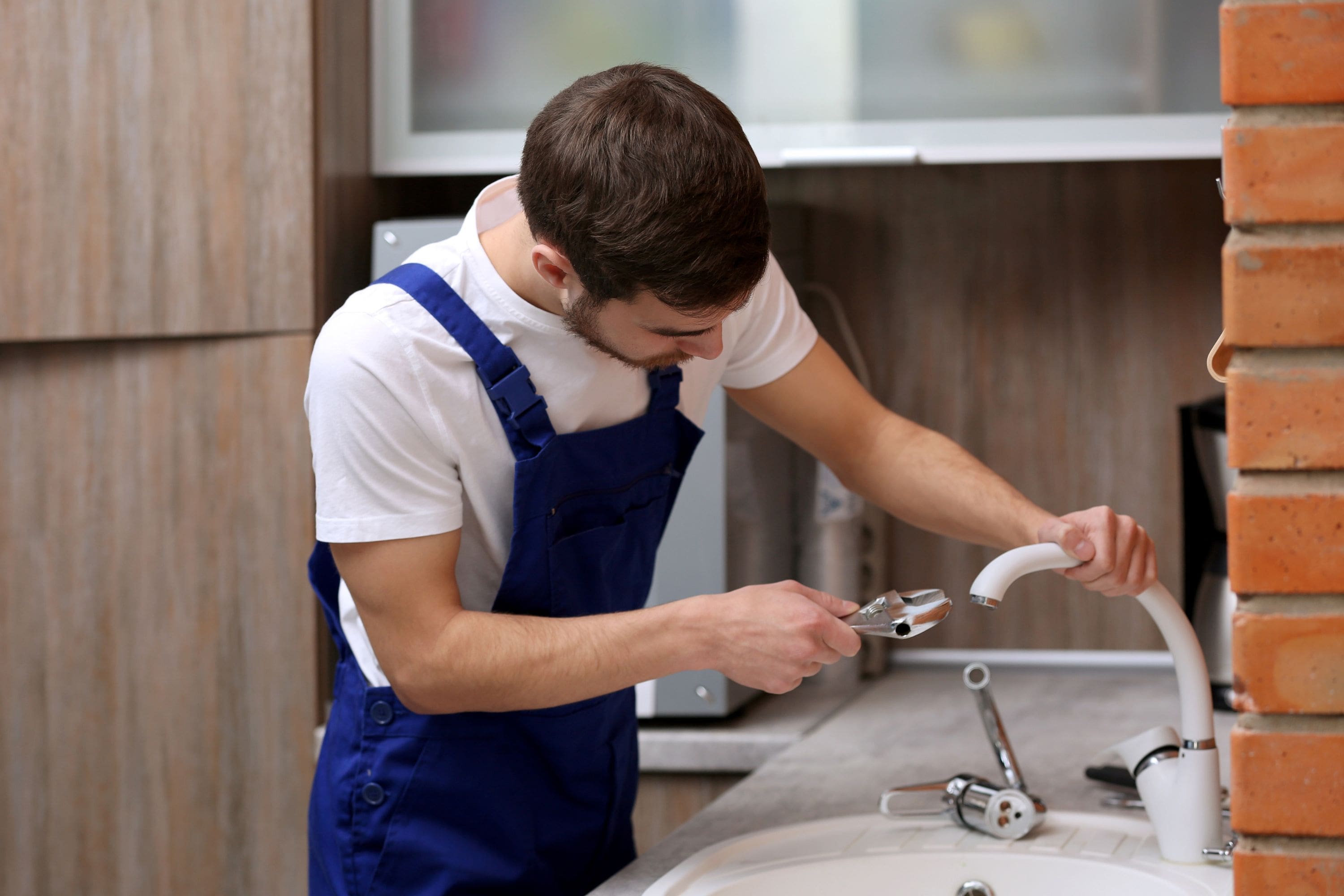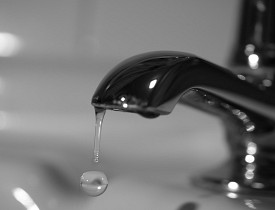How It's Required to Fix a Leaking Faucet
How It's Required to Fix a Leaking Faucet
Blog Article
This great article which follows in relation to Why It's Important to Fix Leaky Faucets is highly informative. You should check it out.

Trickling taps may look like a minor inconvenience, however their impact surpasses simply the inconvenience of the sound. From drainage to incurring unneeded financial prices and health and wellness risks, ignoring a dripping tap can bring about various consequences. In this article, we'll look into why it's critical to resolve this typical household concern immediately and effectively.
Wastefulness of Water
Ecological Impact
Leaking faucets add substantially to water wastage. According to the Epa (EPA), a single tap leaking at one drip per second can waste greater than 3,000 gallons of water per year. This not just strains water resources yet likewise influences environments and wild animals based on them.
Step-by-Step Guide to Fixing a Dripping Faucet
Devices Needed
Before attempting to repair a dripping tap, gather the required tools, including a flexible wrench, screwdrivers, substitute components (such as washers or cartridges), and plumber's tape.
Common Faucet Issues and Their Solutions
Recognize the sort of faucet and the particular concern creating the drip. Usual issues consist of worn-out washing machines, rusty valve seats, or damaged O-rings. Describe maker instructions or on the internet tutorials for detailed assistance on repairs.
Financial Expenses
Increased Water Expenses
Past the ecological influence, leaking taps can inflate water expenses substantially. The gathered wastage in time equates right into higher utility expenditures, which might have been stayed clear of with timely repair services.
Prospective Residential Property Damage
Furthermore, extended trickling can lead to damage to fixtures and surface areas surrounding the faucet. Water accumulation can cause staining, deterioration, and also architectural issues if left unattended, resulting in additional repair work expenses.
Health and wellness Issues
Mold and Mildew Growth
The constant presence of moisture from a trickling tap develops a suitable atmosphere for mold and mold growth. These fungis not only jeopardize interior air top quality but likewise posture health dangers, specifically for people with respiratory conditions or allergies.
Waterborne Illness
Stationary water in leaking faucets can become a breeding ground for bacteria and various other virus, raising the danger of waterborne illness. Contaminants such as Legionella bacteria grow in stationary water, potentially resulting in serious diseases when ingested or inhaled.
Do it yourself vs. Expert Repair work
Pros and Cons of Do It Yourself Repair
While some might attempt to deal with a dripping tap themselves, do it yourself repair work feature their own set of obstacles. Without appropriate expertise and tools, DIY efforts can exacerbate the problem or bring about incomplete repair services, lengthening the problem.
Advantages of Working With a Professional Plumber
Working with a specialist plumber ensures that the underlying reason for the leaking tap is resolved properly. Plumbings possess the know-how and tools to detect and fix tap problems effectively, saving time and reducing the danger of additional damage.
Environmental Duty
Specific Payment to Conservation
Taking responsibility for dealing with trickling faucets aligns with more comprehensive efforts toward water preservation and environmental sustainability. Every person's activities jointly make a significant influence on protecting precious sources.
Sustainable Living Practices
By focusing on prompt repair services and adopting water-saving routines, individuals contribute to lasting living practices that profit both existing and future generations.
Safety nets
Regular Maintenance Tips
To prevent trickling faucets, do routine maintenance such as cleansing aerators, examining for leakages, and replacing worn-out components promptly. Furthermore, take into consideration installing water-saving gadgets or updating to much more effective components.
Importance of Prompt Repair Works
Attending to trickling taps as soon as they're discovered avoids additional water wastefulness and possible damages, ultimately saving both water and money in the long run.
Effect On Property Value
Perception of Well-Maintained Property
Maintaining a home in good condition, including dealing with maintenance concerns like trickling faucets, enhances its regarded worth and value among possible purchasers or renters.
Impact on Resale Worth
Features with properly maintained plumbing fixtures, consisting of faucets, command greater resale values in the property market. Attending to dripping taps can add to a favorable impact during home assessments and arrangements.
Conclusion
Dealing with a trickling faucet goes beyond mere benefit; it's a necessary action towards saving water, minimizing economic expenses, and securing health and wellness and residential property. Whether via do it yourself fixings or specialist help, acting to repair dripping taps is a little yet impactful way to advertise liable stewardship of resources and add to a much healthier, much more lasting future.
How to Fix a Dripping or Leaky Faucet
A leaking faucet is one of the most common problems that homeowners encounter, but it being commonplace doesn’t make it any less annoying. The constant drip drip drip of a leaking bathtub faucet, showerhead, or sink tap can disturb your home’s serenity. Left neglected, a dripping faucet can also result in higher water bills and discoloration or mold growth in your sink or plumbing fixtures.
Fortunately, you don’t have to be a trained plumber to know how to stop a dripping faucet. With some basic tools, replacement parts, and a little patience, leaky faucet repair is a breeze. In this article, we’ll explain what causes dripping faucets and how you can fix them.
What Causes a Leaking Faucet?
Kitchen and bathroom faucets come in all manner of designs, but most involve some combination of valves, O-rings, seals, and washers. The O-ring is usually the weakest link, but any one of these pieces can wear down over time. Heat, moisture, temperature fluctuations, minerals, mold, and movement can contribute to warping and corrosion, breaking the watertight seal. This just comes with the territory of being a homeowner. Everything is always subject to wear and tear, and some component parts of your appliances and fixtures need to be replaced on occasion. At least replacement O-rings are cheap!
More rarely, dripping faucets can be a symptom of excessively high water pressure. Were this the case in your home, you would probably notice that the leak is not isolated to one faucet. Water pressure issues are harder to resolve on your own. We recommend contacting a professional plumber if you suspect your water pressure is too high.
How to Fix a Dripping Faucet
Pipe wrench or monkey wrench Allen wrench set Screwdrivers Old towel or rag Shut off the water.
Before you do anything, you need to turn off the water to keep from drenching your kitchen or bathroom. You should find a valve under the sink and against the wall. Once you’ve turned this valve, try turning the faucet on to confirm that the water source has been cut off.
If you can’t locate your local valve for the faucet you’re working on, you can always shut off the water to the house at the main valve. Of course, this will prohibit anyone from using the sinks, showers, or toilets while you’re working on the faucet that’s giving you trouble.
Plug or block the drain.
You’ll be disassembling the faucet and removing some small bits of hardware. Plug the drain with a stopper or rag to avoid the possibility of a small screw falling into your P-trap.
Take apart the faucet assembly.
There are several varieties of kitchen and bathroom faucets, each with its own manner of assembly. For detailed instructions on how to disassemble your faucet, you can refer to the fixture’s manual or contact the manufacturer. If you know whether you have a ball, disc, cartridge, or compression faucet, you can find detailed schematics online.
In general, you need to begin by removing the faucet handles. You might notice a small screw that you’ll need to remove with a screwdriver or Allen wrench. If you don’t see any visible securing hardware, it’s likely hidden under a decorative cap that can be unscrewed or popped off with flathead screwdriver.
Remove each piece methodically, consulting a schematic when necessary. Take notes or arrange the pieces in such a way to make it easier to correctly reassemble the faucet later.
Remove the cartridge.
Once you’ve removed the handles and securing hardware, you should be able to remove the valve cartridge or stem. Some cartridges will slide right out. Other faucet models will require you to loosen a nut with a pipe wrench before you can remove the valve stem.
Examine the exposed hardware.
With the cartridge or stem removed, inspect the component parts. Check the rubber O-rings for wear and tear. Also examine the seat washer for corrosion or other damage. These pieces are usually the responsible parties for a dripping faucet, but it’s worth inspecting the other component parts while you have the faucet disassembled.
Find replacement parts.
Once you’ve identified which faucet component has failed, find an identical replacement. Your local hardware store should have O-rings, seat washers, and other standard components in stock. If you have a luxury or uncommon faucet, you may have to contact the manufacturer for a replacement part.
It’s a good idea to take your old parts with you to the hardware store so you can compare them with the store’s inventory and be sure you’re purchasing the correct replacement.
Reassemble the faucet.
With your new parts in hand, reconstruct the faucet and handles. Don’t be tempted to overtighten screws or nuts. You might think this could create a better seal, but it can instead damage or bend a delicate part of the assembly and create a new problem for you.
Turn on the water and test the faucet.
The only thing left to do is test your work. Unplug the sink, turn the water back on, and try the faucet. Congratulate yourself on a job well done!
https://www.libertyhomeguard.com/how-to-fix-a-dripping-or-leaky-faucet/

Do you enjoy reading about Water Dripping from Faucet: Why and How to Fix? Create a short review down the page. We'd be happy to know your insights about this write up. Hoping that you come back again in the future. Sharing is nice. Helping others is fun. We value reading our article about How to Fix a Dripping or Leaky Faucet .
Report this page